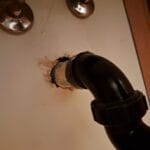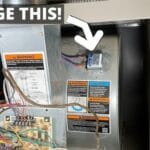Imagine coming home, eager to see your floors spotless, only to find bits of dust and debris stubbornly clinging to the corners. If you rely on your trusty Roomba for cleaning, a side brush that refuses to spin can turn your cleaning dreams into frustration.
You’re not alone in this dilemma, and there’s a reason behind this mechanical hiccup. Your Roomba is designed to tackle dirt in every nook and cranny, but when its side brush stops spinning, it feels like your cleaning companion is letting you down.
Why does this happen, and what can you do about it? Understanding the root cause not only empowers you to solve the issue but also ensures your Roomba performs at its best. Discover how you can restore your Roomba’s efficiency and reclaim your clean home by diving into the solutions and insights that await you. Don’t let a simple fix stand between you and a spotless floor. Read on to learn more!
Common Causes
Is your Roomba side brush not spinning? You’re not alone. This common issue can transform your efficient cleaning machine into a frustrating chore. Understanding the root causes can save you time and possibly a call to customer service. Let’s dive into the common reasons behind this problem, so you can get your Roomba back in action.
Brush Obstruction
One of the most frequent culprits is an obstruction. Small debris, hair, or thread can wrap around the brush, stopping it from spinning freely. I’ve found that a quick inspection and removal of any entangled material often solves the problem. You might be surprised at how much can accumulate after just a few cleaning cycles.
Motor Issues
Have you considered the motor? It’s the powerhouse behind the brush’s rotation. If the motor fails or is weak, the side brush won’t spin. Checking the motor’s connection and functionality can reveal if it’s time for a replacement. Sometimes, giving the motor a gentle nudge can bring it back to life, but don’t rely on this trick for long-term use.
Gear Misalignment
Misaligned gears can be a silent disruptor. These gears need to mesh perfectly for the brush to spin. Even a slight shift can halt the operation. Aligning the gears properly can restore the smooth spinning of the brush. If you’re handy, a simple adjustment may be all it takes to fix this issue.
Worn-out Brush
Is it possible that your brush is simply worn out? After extensive use, the bristles can become frayed and ineffective. Replacing the brush with a new one can give your Roomba a fresh start. Regularly checking the condition of the brush can prevent downtime and maintain optimal cleaning performance.
Have you ever fixed your Roomba by addressing one of these issues? Share your experience, and let’s see how many Roomba enthusiasts have faced these common obstacles!

Credit: www.youtube.com
Inspecting The Brush
Dirt or tangled hair can stop the Roomba side brush from spinning. Regular cleaning helps maintain its function. Check for obstructions or damage to ensure smooth operation.
Inspecting the brush on your Roomba can be a straightforward process, but it might hold the key to solving why the side brush isn’t spinning. This small component plays a big role in ensuring your floors get the thorough clean they deserve. If you’ve ever found yourself wondering why your Roomba seems to miss those pesky corners, understanding how to inspect the brush might just be the answer.Understanding The Brush Mechanism
Begin by familiarizing yourself with how the side brush functions. It’s attached to a motor that rotates it, sweeping debris into the Roomba’s path. Check if the brush seems stuck or doesn’t rotate freely when you attempt to spin it manually. A little hands-on inspection might reveal the culprit. Is your brush clogged with hair or dirt? These common obstructions can halt its rotation. Gently remove any debris wrapped around the brush’s base. You might be surprised how a simple cleanup can restore functionality. Have you ever found a tiny toy or other foreign object tangled with the brush?Examining The Brush For Wear And Tear
Inspect the brush for signs of wear. Bent bristles or broken parts can affect performance. If your brush looks like it’s seen better days, consider replacing it. It’s akin to changing a worn-out tire on your car—necessary for smooth operation.Testing The Brush Motor
A faulty motor might be behind the issue. Test the motor by listening for any unusual sounds when the Roomba is operating. If it sounds labored or silent when it should be spinning, the motor might need attention. Would you replace the motor yourself, or seek professional assistance?Ensuring Proper Attachment
Check if the brush is securely attached to its base. Sometimes, it might be loosely fitted, causing it not to spin properly. Tighten any screws or fittings that hold the brush in place. Could a simple adjustment be the solution you’re looking for? Remember, regular inspection can prevent small issues from becoming big problems. Have you ever thought about setting a routine to check your Roomba brushes? By understanding these simple steps, you ensure your Roomba continues to clean efficiently, saving you time and effort.Cleaning The Mechanism
Roomba side brush might stop spinning due to tangled hair or debris blocking its mechanism. Regular cleaning helps maintain its efficiency. Ensure the brush is free from obstructions for optimal performance.
When your Roomba’s side brush stops spinning, it can be a real headache. But before you consider costly repairs or replacements, cleaning the mechanism might just be the solution you need. Regular maintenance is key to keeping your Roomba in tip-top shape. This section will guide you through the process of cleaning the side brush mechanism to get your robot vacuum back in action.Why Clean The Side Brush?
The side brush plays a crucial role in cleaning corners and edges. Dust, hair, and debris can accumulate over time, causing the brush to stop spinning. Cleaning it regularly ensures optimal performance and prolongs the life of your Roomba.Gathering Your Tools
You don’t need fancy tools for this task. A small screwdriver, a cleaning brush, and a soft cloth are usually enough. Having these tools handy can make the cleaning process quicker and more efficient.Step-by-step Cleaning Guide
1. Turn Off Your Roomba: Safety first. Make sure the Roomba is powered off before you start. 2. Remove the Brush: Use the screwdriver to remove the screw holding the side brush in place. Gently pull the brush out. 3. Clean the Brush: Use the cleaning brush to remove any hair or debris tangled in the bristles. Wipe it down with the cloth for a thorough clean. 4. Inspect the Mechanism: Check for any dirt or obstructions in the slot where the brush sits. A quick wipe can help remove any hidden grime. 5. Reassemble: Place the side brush back and secure it with the screw. Ensure it’s tightly fitted to avoid it coming loose during operation.Regular Maintenance Tips
Establish a routine to clean your Roomba regularly. A quick clean every few weeks can prevent build-up and ensure your Roomba runs smoothly.When To Seek Professional Help?
If the brush still doesn’t spin after cleaning, consider reaching out to a professional. Sometimes, the issue may be more than just dirt and require expert attention. Regular maintenance not only saves you time but also helps avoid unnecessary costs. Have you checked your Roomba’s side brush lately? A little cleaning can go a long way in ensuring your home stays spotless with minimal effort.
Credit: www.ifixit.com
Checking For Obstructions
Is your Roomba side brush not spinning? It could be due to obstructions. Checking for blockages is crucial. Obstructions can hinder the brush’s movement. This can affect your Roomba’s cleaning efficiency. Let’s explore how to identify and remove these obstacles.
Inspect The Brush Area
First, turn off your Roomba. Flip it over to access the brush area. Look closely around the side brush. Dust and hair can wrap around it. They can stop it from spinning.
Remove Tangled Debris
Use a small tool to remove debris. A pair of scissors can help cut through tangled hair. Be gentle to avoid damaging the brush. Remove all visible dirt and hair.
Check For Larger Obstructions
Sometimes larger objects can be caught. Check the area around the brush. Small toys or pieces of paper might be stuck. Remove them carefully.
Ensure The Brush Is Securely Attached
Ensure the side brush is firmly attached. A loose brush may not spin properly. Tighten it if necessary. Make sure it’s secure but not too tight.
Examine The Brush Motor
Listen for unusual noises. The motor may be obstructed internally. Clear out any debris you find. If the issue persists, consider professional help.
Testing The Motor
If your Roomba’s side brush stops spinning, the motor might be the issue. Testing the motor can help pinpoint the problem. This process involves a few simple steps. Follow these steps to determine the motor’s condition.
Step 1: Gather Necessary Tools
You’ll need a screwdriver and a multimeter. These tools help you check the motor’s functionality. Make sure they are in good condition.
Step 2: Access The Motor
Turn your Roomba upside down on a flat surface. Carefully remove the screws from the side brush cover. This exposes the motor and the brush assembly.
Step 3: Inspect The Motor And Connections
Examine the motor and its wires. Look for signs of wear or damage. Ensure all connections are secure and intact.
Step 4: Test The Motor With A Multimeter
Set your multimeter to measure resistance. Touch the probes to the motor’s terminals. A stable reading indicates a working motor. Fluctuating or no reading suggests a problem.
Step 5: Consider Motor Replacement
If the motor shows no signs of life, replacement might be necessary. Consult your Roomba’s manual for compatible parts. Replacing the motor can restore your Roomba’s efficiency.
Replacing Worn Parts
Roomba’s side brush may stop spinning due to worn parts. Regular checks can identify issues early. Replacing damaged components ensures optimal cleaning performance.
Replacing worn parts is crucial to maintaining the optimal performance of your Roomba. If you’ve noticed that the side brush isn’t spinning, it might be time to consider changing some components. This task might seem daunting at first, but with a little guidance, it’s straightforward and can save you from future headaches.Inspecting The Side Brush
Begin by examining the side brush for any visible signs of wear or damage. Is it bent or frayed? These are clear indicators that a replacement is necessary. A worn-out brush not only affects cleaning efficiency but can also strain the motor.Checking The Brush Module
The brush module is another key component. If it’s clogged with debris, the side brush may struggle to spin. Remove the module and give it a good clean. If cleaning doesn’t solve the issue, it might be time to replace the module itself.Replacing The Side Brush
Swapping out an old side brush for a new one is simple. Unscrew the existing brush and attach the new one, ensuring it’s securely fastened. You might be surprised at how much this small change improves your Roomba’s performance.Verifying The Motor Function
Is the motor functioning correctly? Sometimes, a non-spinning brush can be due to a faulty motor. Listen for unusual noises or vibrations when the Roomba is running. If the motor sounds off, replacing it could be the solution.Ensuring Compatibility
When purchasing replacement parts, make sure they’re compatible with your Roomba model. Using the wrong parts can lead to further issues. Check your Roomba’s manual or the manufacturer’s website for the right specifications.Benefits Of Regular Maintenance
Regularly replacing worn parts extends the lifespan of your Roomba. It ensures efficient cleaning and prevents more severe breakdowns. Have you ever thought about scheduling routine checks to avoid unexpected failures? Taking these steps to replace worn parts can breathe new life into your Roomba. By addressing these issues head-on, you maintain a clean home and a smoothly running device. How often do you inspect your Roomba for wear and tear? Consider making it a regular habit.Resetting The Device
A Roomba’s side brush might stop spinning due to software glitches. Resetting the device often resolves these issues. This simple step can restore the brush’s functionality, ensuring efficient cleaning.
Resetting your Roomba can be a simple yet effective way to resolve issues like the side brush not spinning. Just as we reboot our computers to fix minor glitches, your Roomba might need a quick reset to get back on track. This process is straightforward and doesn’t require any special tools, making it accessible for everyone.Understanding The Need For A Reset
Sometimes, your Roomba might just need a little nudge to get going again. If the side brush stops spinning, it might be due to a temporary software glitch. Think of a reset as giving your Roomba a fresh start, clearing out any hiccups that could be causing the problem.Steps To Reset Your Roomba
To reset, start by pressing and holding the “Clean” button for about 10 to 20 seconds. You will hear a tone, indicating that the device has been reset. Once done, release the button and let your Roomba reboot.What Happens After A Reset?
After a reset, your Roomba will lose some of its saved settings. You might need to reprogram your cleaning schedule. However, this is a small price to pay for getting your side brush spinning again.Checking The Results
Once the reset is complete, test your Roomba to see if the issue is resolved. Place it on the floor, press the “Clean” button, and observe the side brush. If it’s spinning, you’ve successfully fixed the problem.Why Resetting Is Worth A Try
Resetting is quick and can save you time and frustration. It’s a handy trick to have up your sleeve, especially when you’re not sure why something’s not working. Plus, it keeps you from having to contact support or wait for repairs. Have you tried resetting your Roomba before? What was your experience? Share your thoughts in the comments below. Your insights might just help someone else facing the same issue.Maintenance Tips
Is the Roomba side brush not spinning? Check for tangled hair or debris causing blockage. Regular cleaning of the brush and motor area can prevent this issue.
Maintaining your Roomba is crucial to ensure it operates efficiently. One common issue Roomba owners face is the side brush not spinning. Regular maintenance can prevent this problem and extend the life of your Roomba. Let’s explore some practical maintenance tips that you can easily follow.Check For Tangled Hair And Debris
Hair and debris can easily get wrapped around the side brush, causing it to stop spinning. Regularly check your Roomba’s side brush for any tangles. Use a small pair of scissors or a brush to gently remove any trapped hair. This simple step can prevent unnecessary wear and tear on the motor.Inspect The Brush Motor
Sometimes the issue lies with the brush motor itself. Remove the side brush and check if the motor is functioning properly. Listen for any unusual noises or see if the motor is struggling to turn. If there is a problem, it might be time to consider a replacement. Always consult your user manual for guidance on motor issues.Tighten Loose Screws
A loose screw can cause the side brush to wobble and not spin effectively. Regularly inspect and tighten the screw that holds the side brush in place. Make sure it’s snug but avoid overtightening, as this could damage the brush or motor.Clean The Brush Module
Dust and dirt can accumulate in the brush module, affecting its performance. Remove the module from your Roomba and clean it thoroughly. Use a damp cloth to wipe away dirt, and ensure all parts are dry before reassembling. A clean module helps the brush spin smoothly.Replace Worn Brushes
Over time, the side brush will naturally wear out. If you notice the bristles are frayed or the brush isn’t cleaning as well, it’s time for a replacement. Keeping spare brushes on hand ensures you can quickly swap them out when needed. Routine maintenance doesn’t just prevent issues; it keeps your Roomba performing at its best. Who doesn’t love a clean home without the hassle? Are you regularly checking your Roomba, or is it time to add these tips to your cleaning routine?
Credit: www.amazon.com
Frequently Asked Questions
Why Is My Roomba Side Brush Not Spinning?
The side brush might be clogged. Check for hair or debris blocking it.
How Do I Clean The Roomba Side Brush?
Remove the brush. Use your fingers or a tool to clear debris and hair.
Can A Faulty Motor Cause The Brush To Stop?
Yes, a broken motor can stop the brush. Consider getting it checked or replaced.
Does Low Battery Affect The Side Brush?
Low battery can reduce performance. Ensure your Roomba is fully charged.
How Often Should I Replace The Side Brush?
Replace every six months. This keeps your Roomba working efficiently.
Conclusion
Solving the Roomba side brush issue is easier than it seems. Regular cleaning helps keep it working well. Check for tangled hair or debris often. Tighten any loose screws carefully. Replace worn-out brushes to maintain efficiency. These steps ensure your Roomba runs smoothly.
A well-maintained brush means cleaner floors. No more stuck dirt in corners. Simple fixes can save you time and stress. Keep your Roomba ready for action. Enjoy the convenience of spotless cleaning. Your smart vacuum deserves attention. Small efforts lead to big results.
Happy cleaning!




